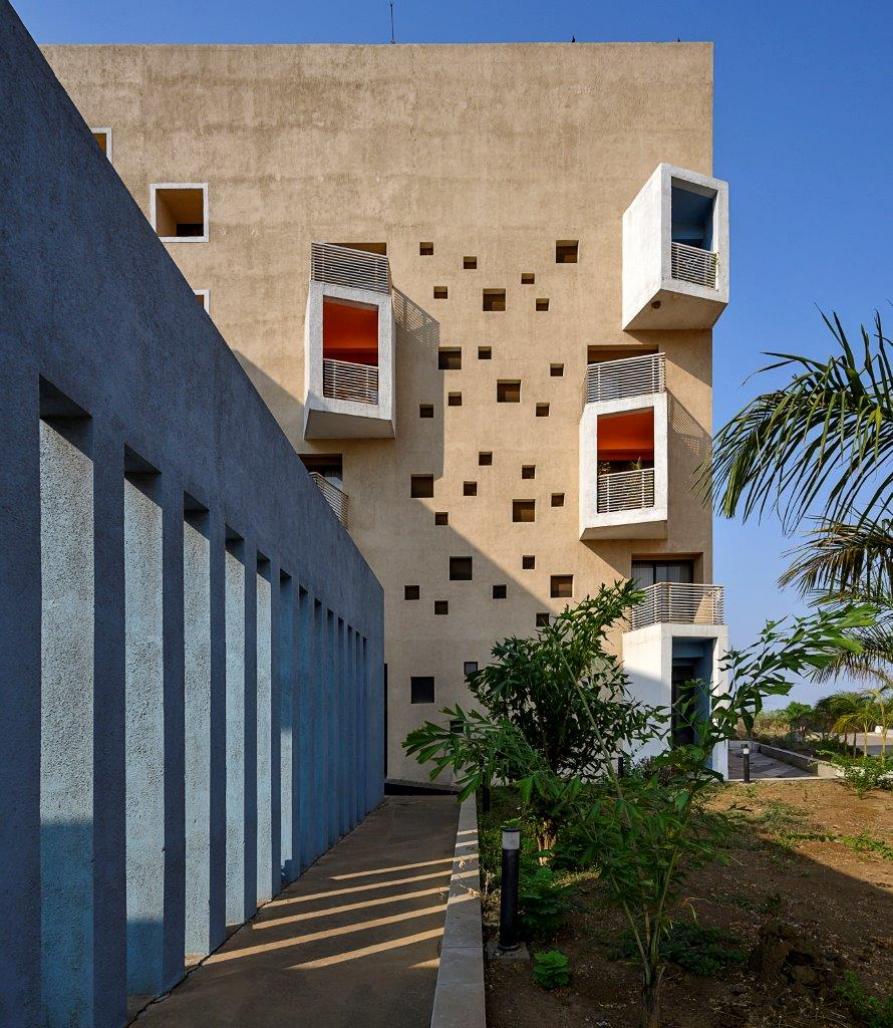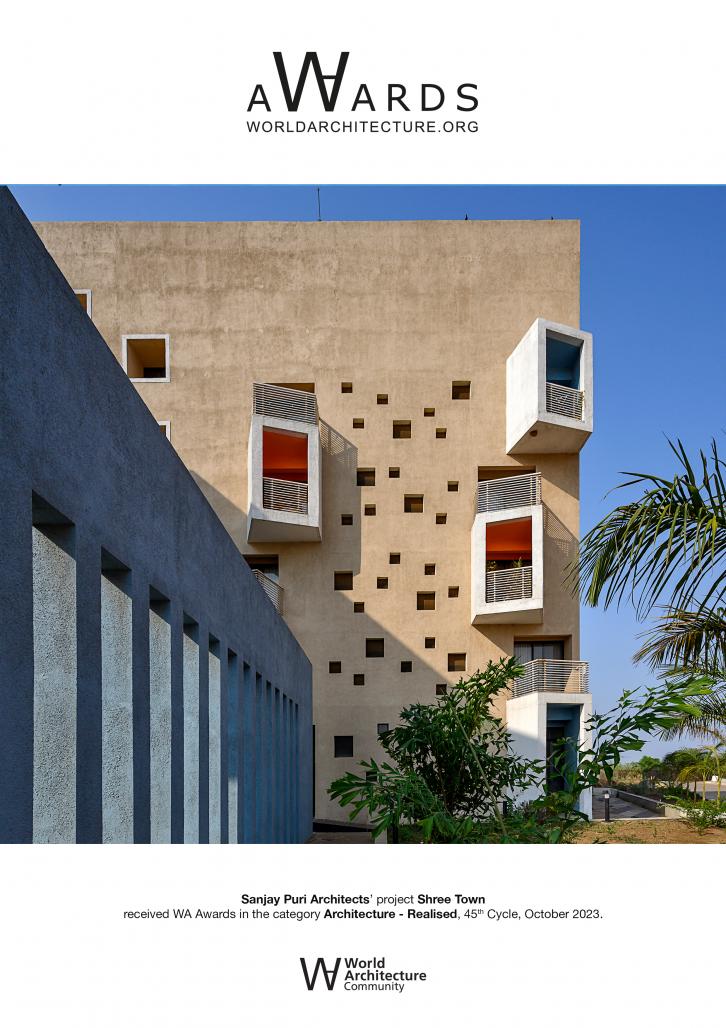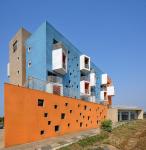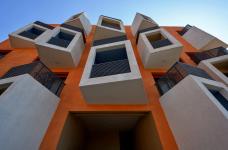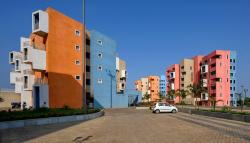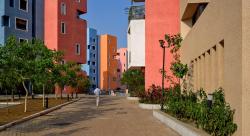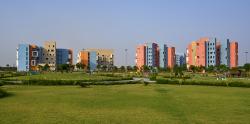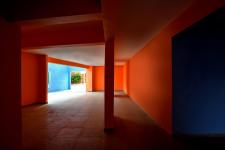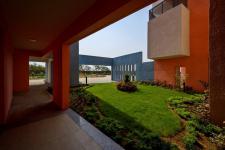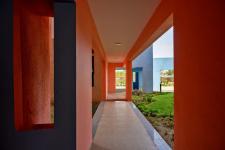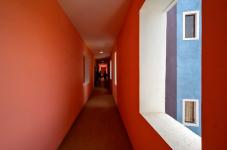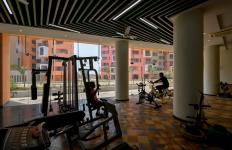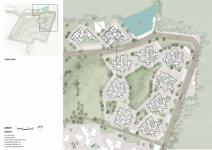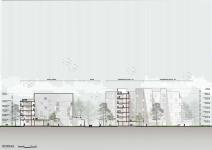Taking cues from the organic housing layouts of old Indian cities & villages, this housing project has an informal layout. Part of a masterplan of a 36-acre self-sufficient housing project being developed for the personnel of a cement plant, this project is located 3 km from the closest small city amidst open land all around with no other development in the vicinity. A large open landscaped park punctuates the overall masterplan with studio apartments, smaller & larger apartments, a school & a club along the perimeter of the site.
Within an area of 6 acres (24281sq.m.), a mid-rise buildings housing 72 studio apartments, 48 nos. of 2-bedroom apartments and 48 nos. of 3 bedroom apartments are planned in an organic layout. Each building is designed with sheltered open courtyards naturally ventilated circulation spaces & garden spaces between them. All the apartments are designed with recessed windows, sheltered balconies & cross ventilation to mitigate heat gain in response to the hot climate of the location where temperatures remain in excess of 35°C for 8 months annually. Color plays an important role in the project. Different color combinations identify the different building typologies within the housing. Vibrant colors are an integral part of traditional festivals, clothing, ornaments, housing & food in India.
This project is 3km away from a very small city and 90 km away from the closest large city. To invoke a sense of vibrancy as a response to its isolation & simultaneously imbibe traditional Indian culture. Colourful hues accentuate the buildings & their circulation spaces. The internal spaces of each home is in neutral colors allowing the occupants to have their own choices. Since the overall layout is planned with a large 36,000 sq.m. garden, the apartment buildings are designed to create intimate sheltered spaces between them. These spaces are varied in each part of the layout by the organic nature of the building placement, creating multiple spaces with varying degrees of enclosure & shape. All the water is recycled and reused within the project with its own sewage treatment plant. Extensive rain water harvesting is integrated with the planning. The design ensures & facilitates natural light and ventilation to all the spaces within. Designed in response to the climate, imbibing traditional planning principles& cultural responses. Shree Town is a contextual housing project designed sustainably.
2016
2020
--
Sanjay Puri, Ruchika Gupta, Kaushik Sheth, Manveer Chopra, Rohan Shiktode, Karun Chughasrani, Keval Shah, Ronak Kothari
Shree Town by SANJAY PURI ARCHITECTS in India won the WA Award Cycle 45. Please find below the WA Award poster for this project.
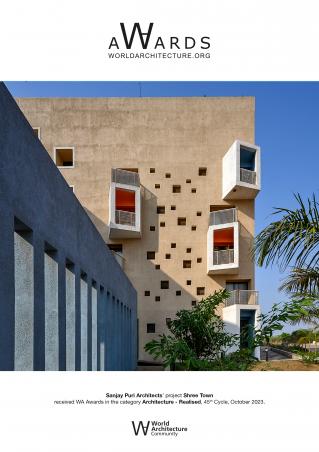
Downloaded 0 times.
Favorited 1 times
